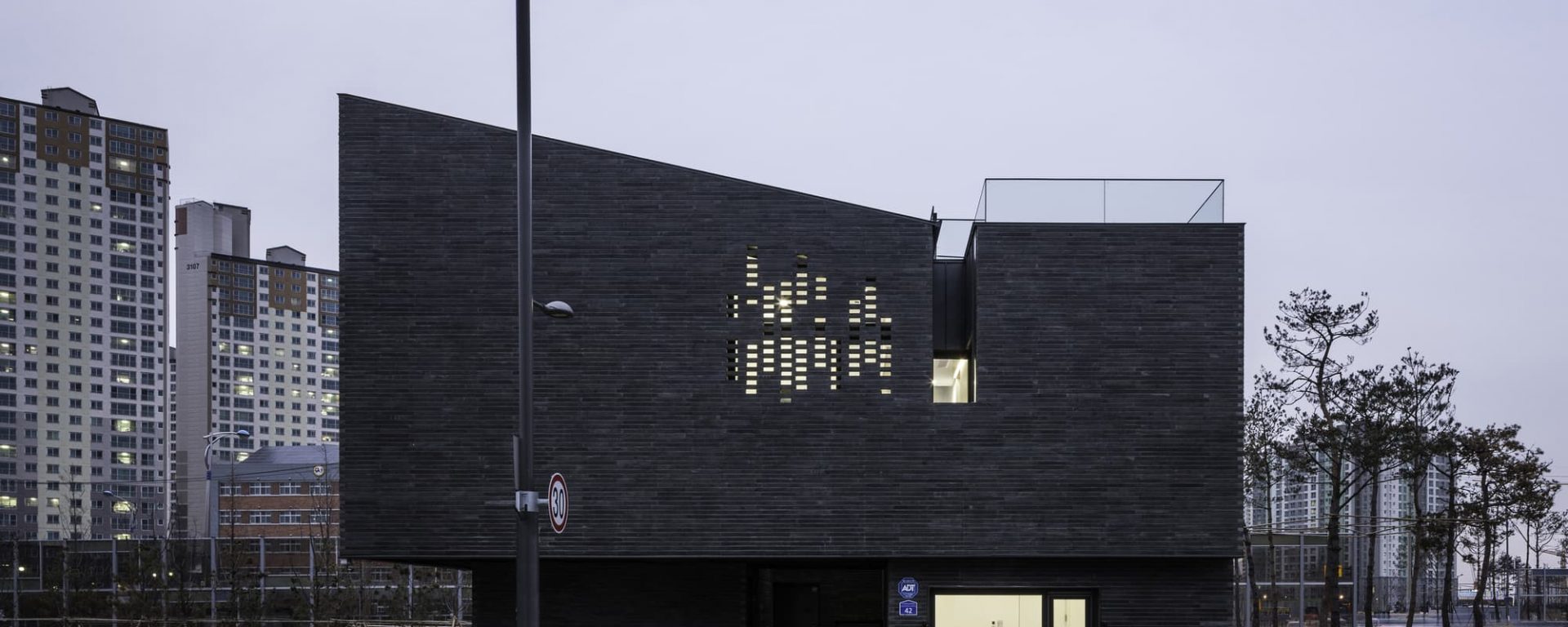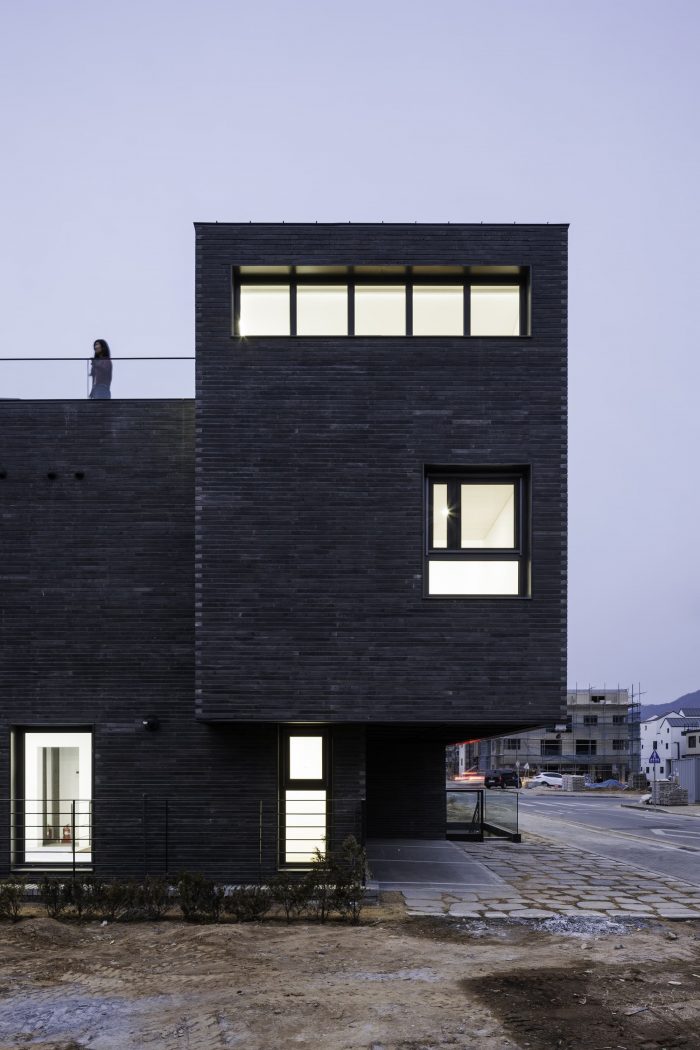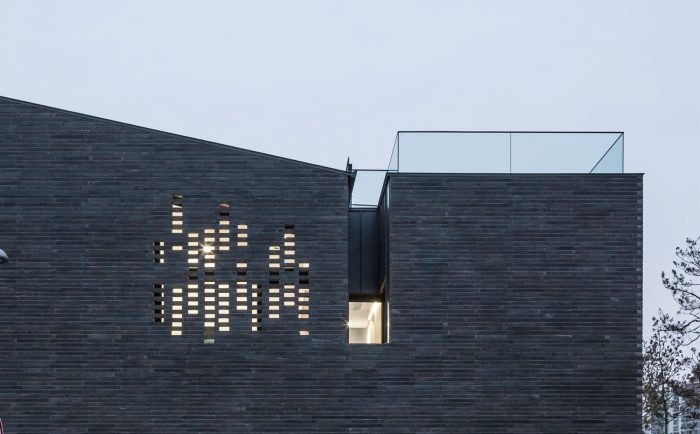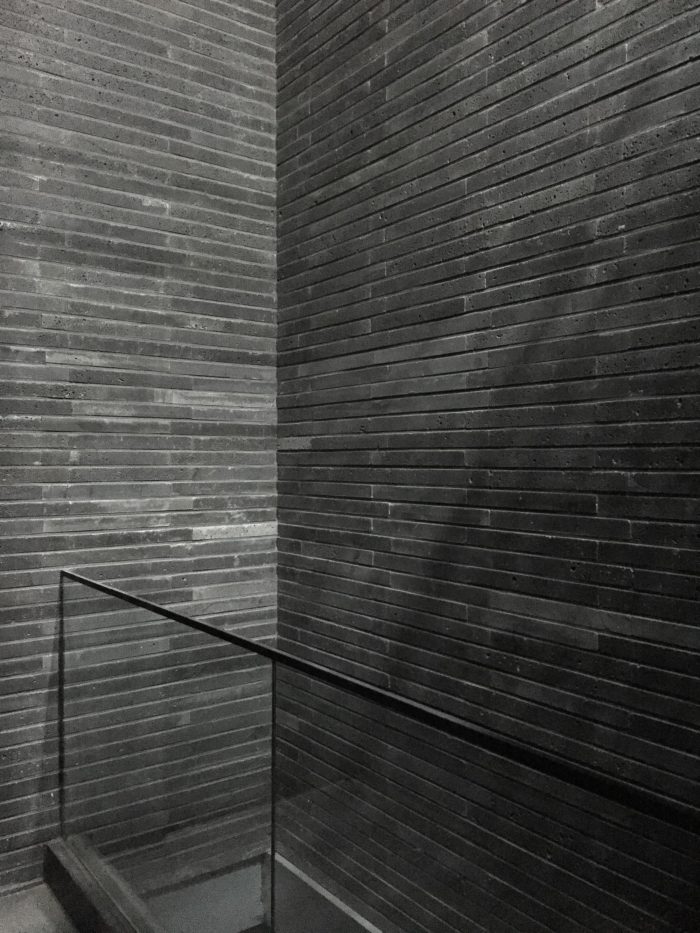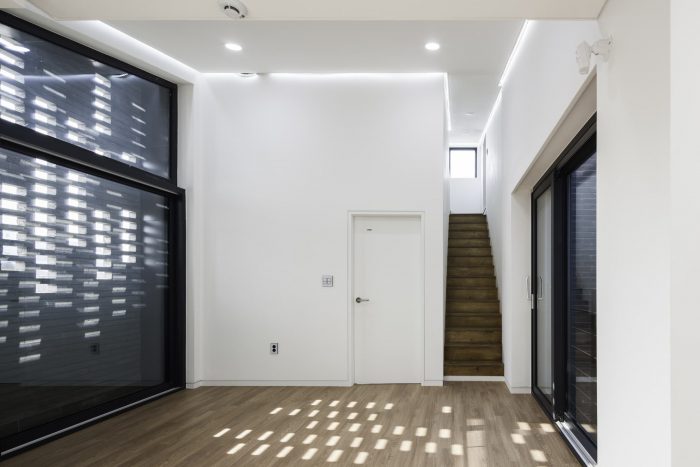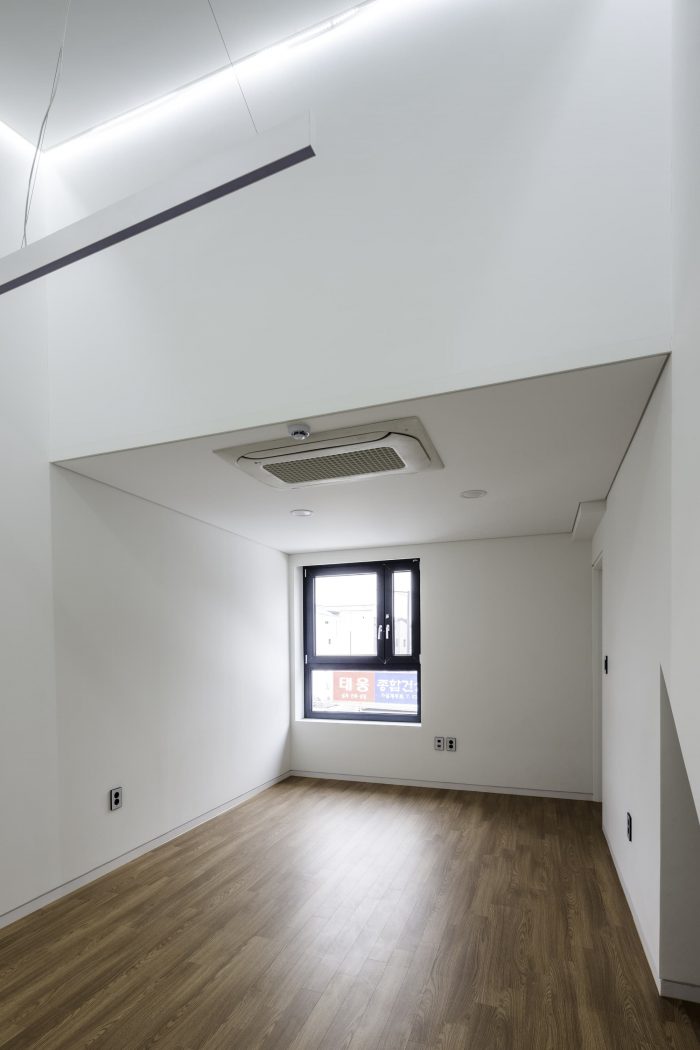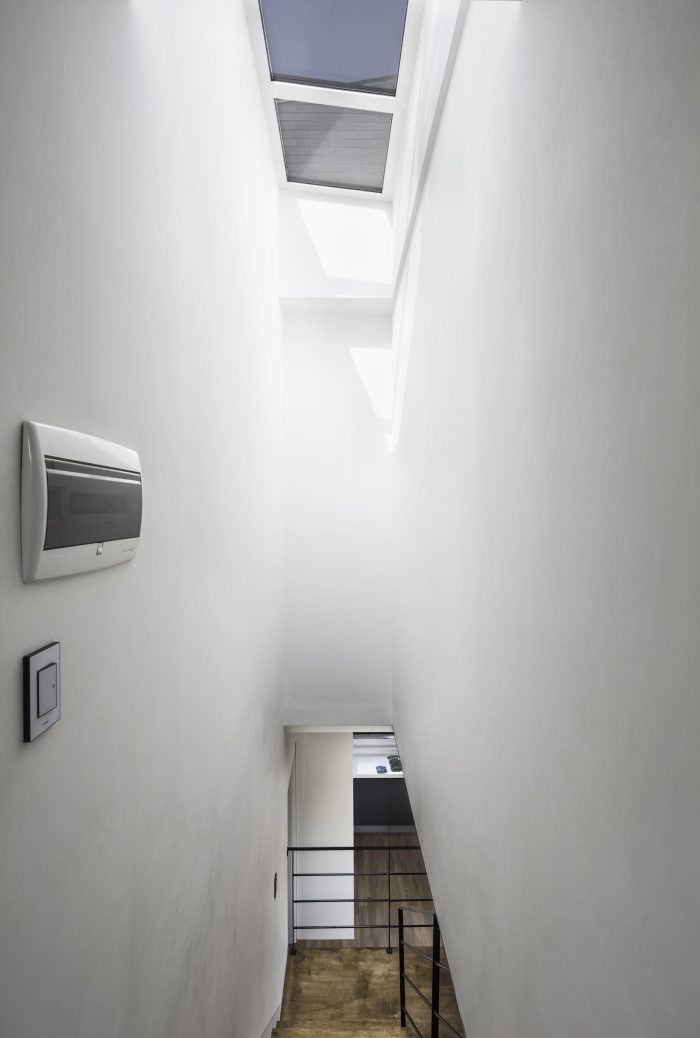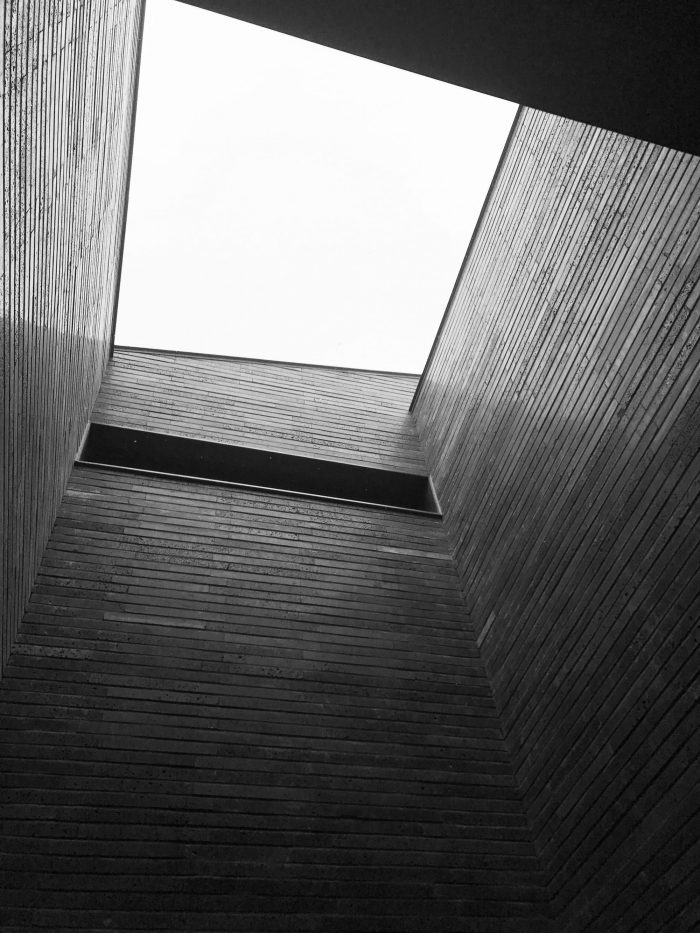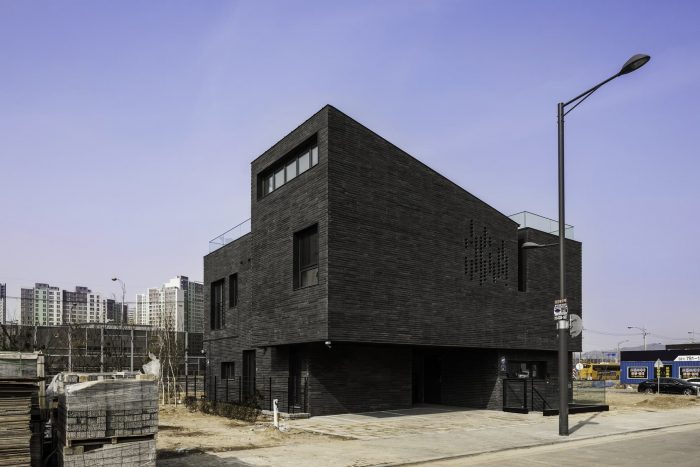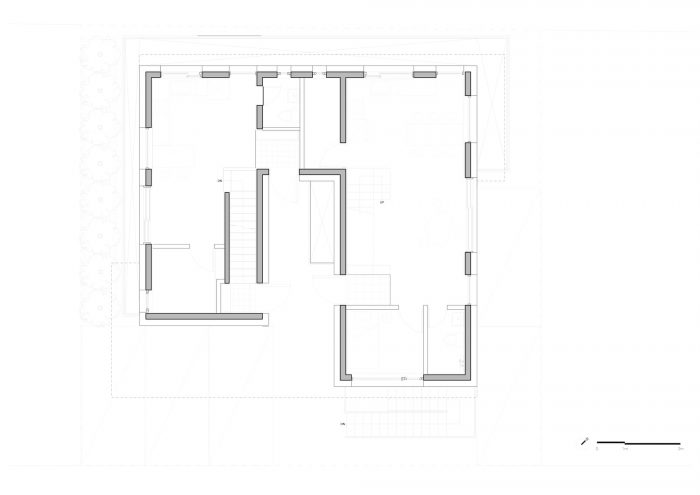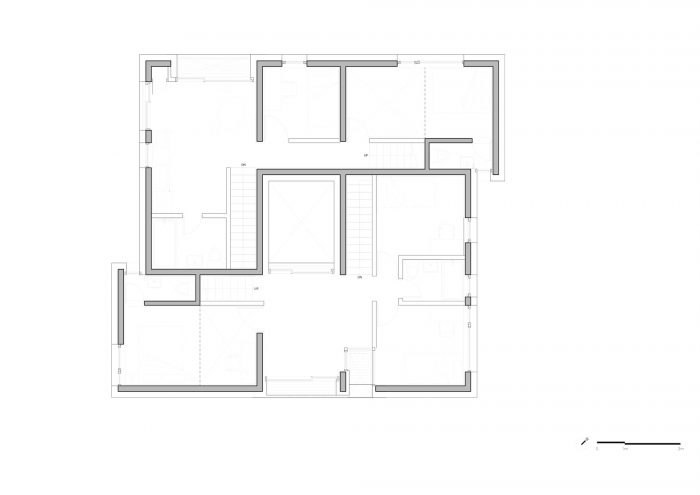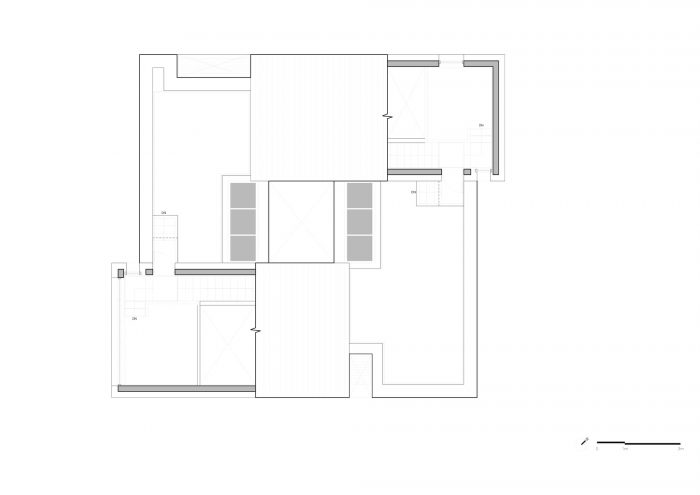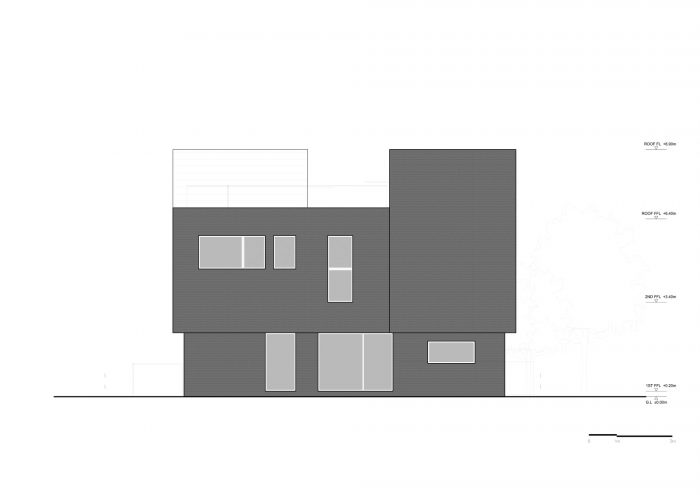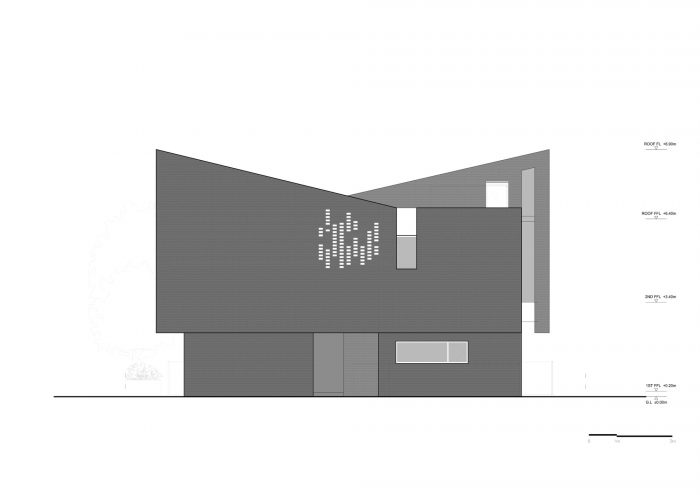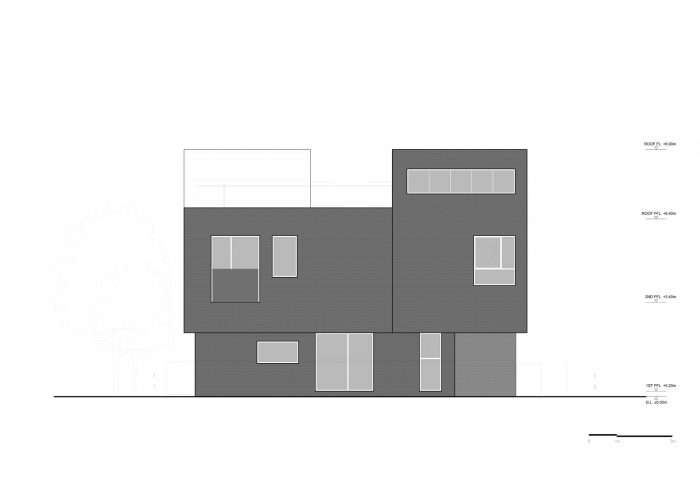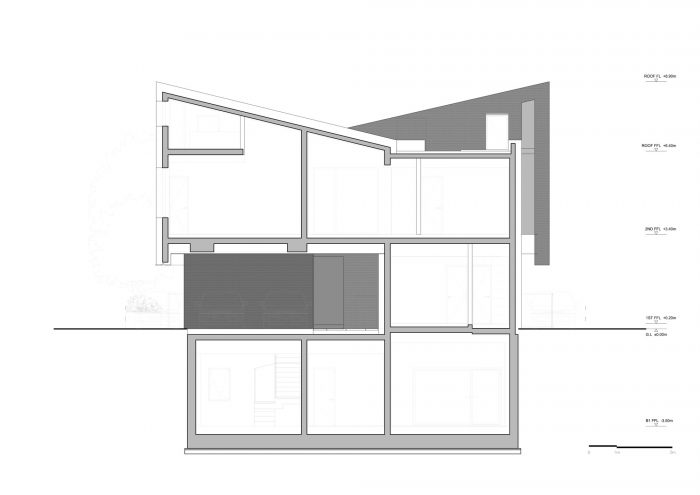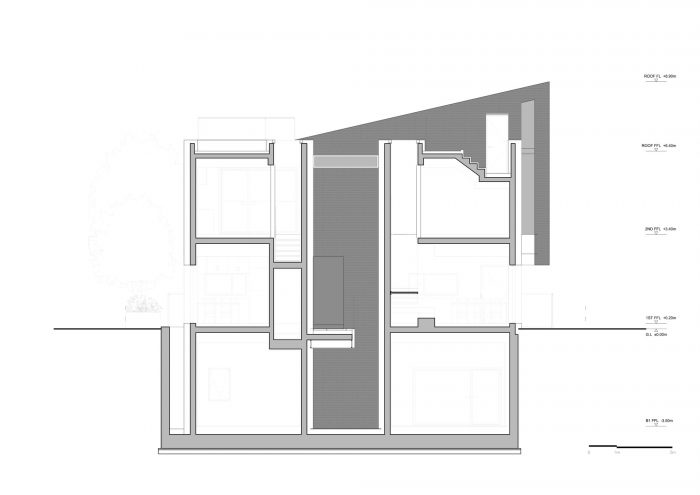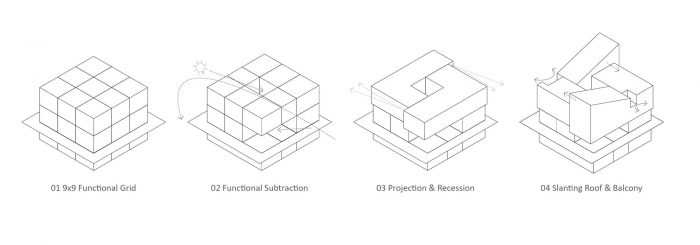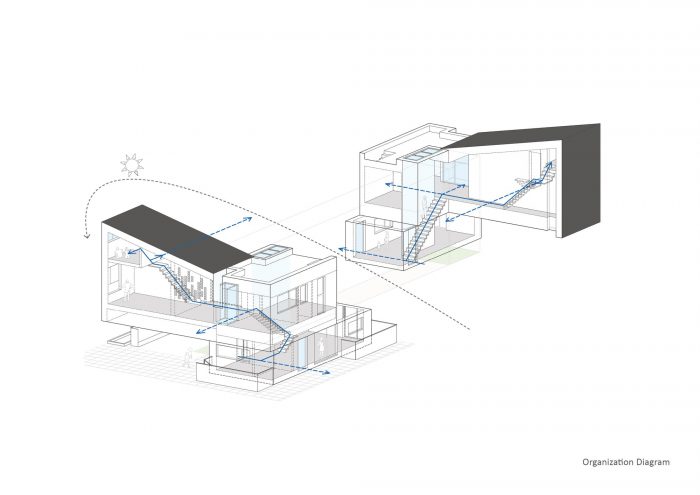DP9131的房子建在全新的住宅区内,在设计期间,整个区域是空的。既没有考虑到背景,也没有考虑到地方性。如今在韩国,一栋楼里有两个住房单元(一般称为 “花生屋”)是很有名的,因为一个是业主的,另一个是出租的,以管理建筑成本。由于这些房子通常倾向于将两座房子并列,以获得独立和隐私,从建筑学的角度来看,这可能会削弱建筑的完整性。对于DP9131住宅,我们的目标是通过系统化地组织住宅的内部和外部空间,而不是简单地将其分割成两个体量,来激发形式的完整性。DP9131住宅是从9×9网格系统开始的,其中9个分区为1个建筑,3个住房单元为1个住宅,由空间要求转化而成。通过三维空间的参与,它试图实现形式的清晰和完整。
DP9131 house is built within the brand new a housing lot where the whole area was empty in the design period. There is neither context nor place-ness to consider. These days in Korea, two-housing units in one building (generally called ‘peanut-house’) is famous as one is for owner and the other is for rent to manage the cost of construction. As these houses generally tend to juxtapose two houses for independency and privacy, it likely weakens the integrity of building in architectural point of view. For DP9131 house, we aimed to provoke the integrity of form by systemizing the organization of internal and external spaces in the house rather than simply splitting into two masses. DP9131 house is started from 9×9 grid system where 9 division into 1 building, 3 housing units into 1 house transformed by the spatial requirements. By three-dimensional engagement of spaces, it tried achieving the clarity and integrity of form.
对于住在公寓房的客户来说,我们希望最大限度地发挥独立屋的潜力,如面向四个方向,有一个天空,和一个灵活的天花板高度。与公寓的紧凑和最有效的平面布局相比,我们提供了一个面向外部的一系列不同方式的循环。DP9131,为了最大限度地利用南向和背面的绿化,”π”、”┖”形状的单元被交错排列,每个单元都通过窗户、天窗、露台、通往阁楼的楼梯间和最后通往屋顶花园来面向所有四个方向。通过这种方式,房屋获得了三维空间的流动,并与外部环境有不同的接口。
For the client who has lived in the apartment housing, we would like to maximize the potentials of the detached house like facing all four directions, having a sky, and a flexible ceiling height. In comparison with the compact and most efficient plan layout in apartment, we provide a circulation with a sequence of various ways facing outside. DP9131, for maximizing south-facing and greenery on the backside, ‘┒‘, ’┖‘ shape units are interlocked as each unit faces all four directions by windows, skylight, terrace, stairwell to attic and finally to the roof garden. By this way, the house gains three-dimensional space flow with various interface with external environment.
DP9131的房子被定位为黑色,其豪华的重量和坚固性,与周围充满各种颜色和材料的环境相比,显得完整和简单。外部装饰材料是抛光的玄武岩砖作为单一的外部材料。玄武岩砖实际上不是砖,而是一种具有多孔质地的天然石材,它被抛光以确保颜色和光泽接近黑色。玄武岩被切割并像砖一样使用,通过接缝有水平纹理。
DP9131 house is positioned in black with its luxurious weight and robustness for the completeness and simplicity contrary to surroundings where would be filled with a diverse colors and materials. External finishing material is a polished basalt brick as a single exterior material. The basalt brick is not actually brick but a natural stone with a porous texture and it is polished to ensure color and gloss close to black. The basalt is cut and use like a brick to have a horizontal texture through joints.
Architects: skimA
Year : 2017
Photographs :Hyosook Chin
Manufacturers : INPRECON, KCC, Kujungmaru, Tigerstone, VARON
Lead Architects : Sejin Kim
Mechanical Engineer : DAEDO Engineering
Contractor : Agreable ltd
Structural Engineer : BASE structural engineering
Site Area : 261.00 ㎡
Building Area : 130.10 ㎡
Gross Built Area : 345.76 m²
Design Team : Yunseon Cho
City : Hanam-si
Country : South Korea

